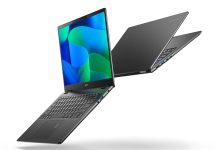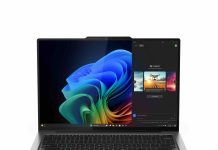The race to the smartphone crown has taken a sudden turn. It is an open secret that Huawei’s new phone would have three camera lenses. What no one knows is the number of pixel count and how well they work together. After a thorough experience, the new Huawei P20 Pro is not just built for the sake of impressing with numbers.
The phone has a design that turns some heads. First, the rear camera placement hints of a design inspired by the iPhone X, but with a twist by aligning the Huawei and Leica brand labels horizontally. Next, the front display spots the infamous iPhone X notch (and like the iPhone, that’s due to the sensor placement for Face Unlock), but with a clever option to hide it completely by simply applying a black background on the status bar.

Other than those, the Huawei P20 Pro is all-original. It carries over the unique ability to project the EMUI Desktop mode to an external HDMI monitor, allowing you to do serious work wherever you are. And unlike the Samsung DeX station, the Huawei P20 Pro’s display can be multi-tasked as a mouse pad, a keyboard, or continue running the Android phone mode, while keeping the EMUI Desktop separately accessible. The phone supports screencast video recording and captures still screenshots by rapping the screen with your knuckles.
The front fingerprint sensor can also be opted to perform the three Android navigation buttons: tap once to go back, hold the sensor to go to homescreen, swipe left or right to bring up recent apps, and swipe upwards to start Google Assistant.
The true star of the P20 Pro is its triple camera. We all know that Leica Dual Camera has appeared on Huawei flagship phones for over 2 years since the P9, and they work like a single system. The additional camera introduced on the P20 Plus is a telephoto lens, which again is not uncommon in many smartphones these days. But the devil is in the details: the tri-lens setup consists of a 40-megapixel f/1.8 colour 1/1.7-inch sensor, a 20-megapixel f/1.6 monochrome sensor, and a 8-megapixel f/2.4 telephoto sensor. Even by looking at the above camera specs baffles tech pundits, because they all have completely different specs. Yet these are purposely-made as such to work together as a singular camera system to achieve some of the most impressive imaging results.
With this unique lens combination, Huawei P20 Pro is capable of capturing 5-times hybrid zoom without appearing pixelated. The 40-megapixel primary sensor probably helps to produce a less pixelated image when shooting with zoom. Furthermore, Huawei downsampled certain shooting modes like Aperture, Portrait, Night Mode, to deliver cleaner, sharper, more detailed images. The P20 Pro can also shoot in super slow motion at 960 fps in 720p. Unlike Samsung or Sony, Huawei can only capture one super slow motion sequence with every shutter tap.
Huawei’s Kirin 970 processor was first used on the Mate 10 series and includes a Neural Processing Unit (NPU) to intelligently detect the scenes and apply the appropriate shooting modes. The P20 Pro improves with faster detection and seamless switching of scenes without disrupting the shooting flow. The 3D portrait lighting mode can even support post-shoot effect modification to adjust the light angles and intensity, just like studio lighting. Even better, low-light photography only requires 4 seconds of exposure, and even when exposing the scene handheld, the photo outcome is unbelievably sharp. No other imaging device – not even a digital SLR – can do that.
The P20 Pro is also pro-audio with various Hi-Res wireless audio codec, like Qualcomm aptX, aptX HD, Sony LDAC, and Huawei’s own HWA (Hi-Res Wireless Audio). I guess this is to compensate for the removal of the 3.5mm audio jack, which will undoubtedly disappoint true audiophiles who still stick to wired audio solutions.
With a 4000 mAh battery capacity and an aggressive power management system, the P20 Pro lasts the entire day comfortably, though it could not make it through the second day. The phone is generally smooth and lag-free, fingerprint and facial unlock works without hesitation. The front-facing speaker at the notch is smaller, so the Stereo+ sound is weaker than earlier models. Some apps on the review unit seems to have hiccups, though I was assured from peers that they did not encounter those issues. Given previous experiences on the P10 and Mate 10, users are likely to encounter some compatibility issues due to the proprietary Kirin processor.
Verdict
Rating 4.5/5
The triple camera system on the Huawei P20 Pro works harmoniously, much to our delight. Never mind the images are a tad overdone in saturation or sharpness, the majority will find that the photos turn out instinctively brilliant. The P20 Pro is also one of the best Huawei-specced smartphone, adding many popular features from other brands: face unlock, Hi-Res wireless audio codecs, 3D portrait lighting effects, super slow motion video, and a notch. This is the best camera smartphone which took Huawei years of innovation, and it looks to stay at the top for quite a while.
S$1148
https://consumer.huawei.com/sg/










![Diver [HAMMERHEAD SHARK]: A Powerful Timepiece with a Purpose](https://nxtmag.tech/wp-content/uploads/2025/06/image004-100x70.jpeg)

